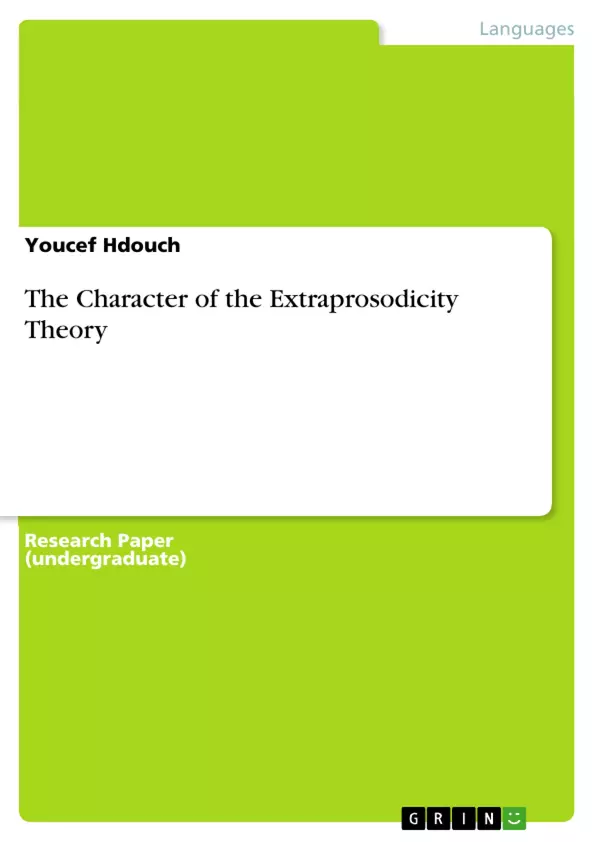The principal objective of this article is to provide a characterization of the Standard Non-linear conception of extraprosodicity. This concept involves the claim that in some given string, certain constituents (autosegments, syllables, feet, etc.) may not count for the purpose of assigning prosodic structure. In this sense, they are extraprosodic.
To achieve this goal, the present paper is divided into three sections. First, we proceed by defining this concept, delimitating its types and assessing each one against the other to work out their similarities and differences. The second one deals with the phonetics and phonology of extraprosodicity. The goal of this section is to show that extraprosodicity is phonetically well-motivated and phonologically well-founded. The third section deals with the representation of extraprosodic material. Different proposals are sketched and assessed against each other. In doing so, we are seeking to acquaint the unfamiliar reader with the issues extraprosodicity has raised.
Inhaltsverzeichnis (Table of Contents)
- Introduction
- 1- Definition
- 2- Types of Extraprosodicity
- 2.1- Extrametricality
- 2.2- Floatingness and Extratonality
- 2.3- Templatic Inertness
- 2.4 – Negative Circumscription
- 2.5 - Extrasyllabicity
- 3- Phonology and Phonetics of Extraprosodicity
- 4- The Representation of Extraprosodic Segments
Zielsetzung und Themenschwerpunkte (Objectives and Key Themes)
This article aims to characterize the Standard Non-linear conception of extraprosodicity. Extraprosodicity refers to the notion that certain constituents in a given string are not counted for the purpose of assigning prosodic structure. The article analyzes different types of extraprosodicity and investigates its phonetic and phonological implications, while also exploring the representation of extraprosodic segments in various theoretical frameworks.
- Definition and Types of Extraprosodicity
- Phonetic and Phonological Evidence for Extraprosodicity
- Theories of Extraprosodic Segment Representation
- Similarities and Differences between Types of Extraprosodicity
- The Role of Extraprosodicity in Word Formation and Phonological Processes
Zusammenfassung der Kapitel (Chapter Summaries)
The first section defines extraprosodicity and discusses its different types: extrametricality, floatingness, extratonality, templatic inertness, negative circumscription, and extrasyllabicity. Each type is analyzed in detail, highlighting similarities and differences in their theoretical implementations.
The second section delves into the phonetic and phonological aspects of extraprosodicity. It examines studies demonstrating the phonetic behavior of extraprosodic segments, highlighting their distinct articulation compared to syllabified consonants. The section further discusses how extraprosodic segments interact with various phonological processes, such as voicing assimilation and liquid drop.
The third section focuses on the representation of extraprosodic segments, exploring different theoretical approaches. The article reviews proposals by McCarthy, Selkirk, Itô, Fudge, Halle and Vergnaud, Hyman, and Goldsmith, highlighting the strengths and weaknesses of each perspective. The preferred model, where the Appendix is adjoined to the prosodic word, is presented, and its implications for suffixation in Berber are discussed.
Schlüsselwörter (Keywords)
The article focuses on the concept of extraprosodicity, analyzing its various types, exploring its phonetic and phonological aspects, and examining the representation of extraprosodic segments. Key themes include extrametricality, floatingness, extratonality, templatic inertness, negative circumscription, extrasyllabicity, syllable structure, prosodic licensing, and word formation.
- Quote paper
- Youcef Hdouch (Author), 2016, The Character of the Extraprosodicity Theory, Munich, GRIN Verlag, https://www.grin.com/document/335207



